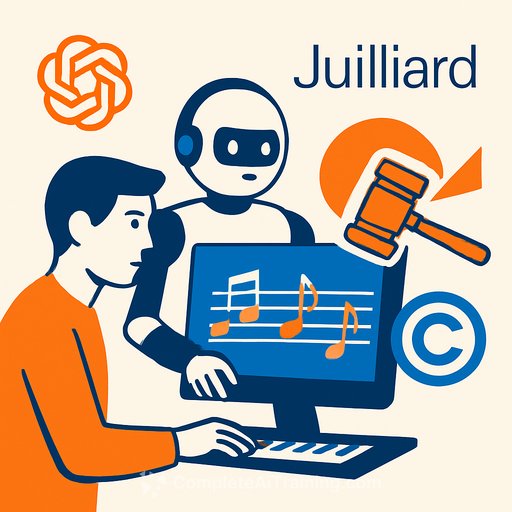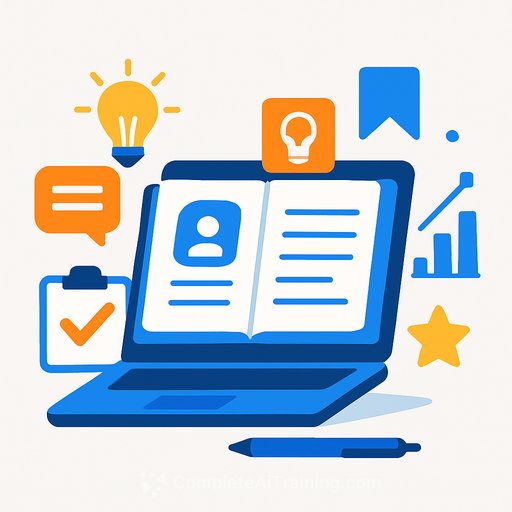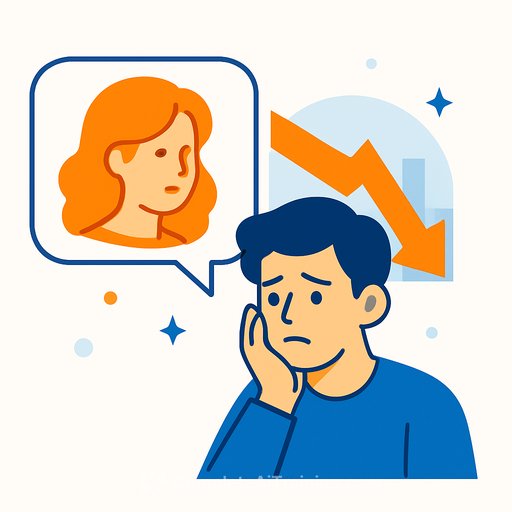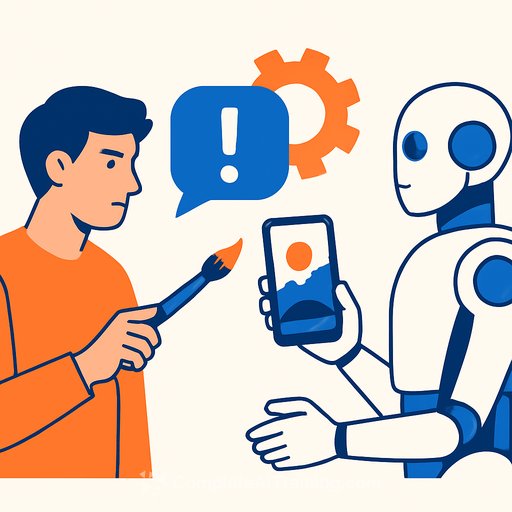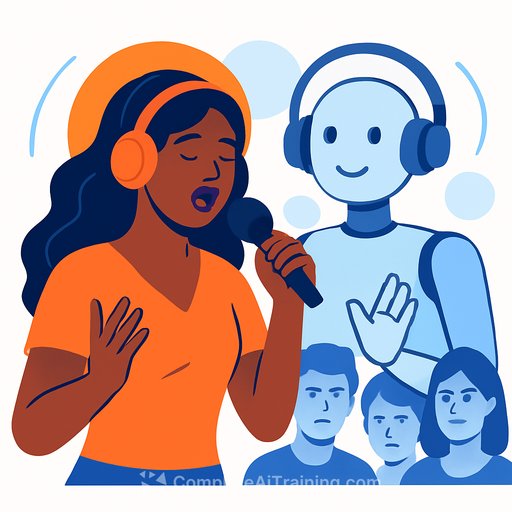OpenAI is quietly building a music model. Here's what that means for creatives
According to The Information, OpenAI is training a model that can generate music from text and audio prompts. The training reportedly includes annotated data from Juilliard students, signaling a push for quality and creative precision, not just noise at scale.
Think Sora for sound: prompts in, music out. Use cases range from ad jingles and background scores to full-length compositions, with potential integration into ChatGPT or Sora.
This isn't OpenAI's first pass at music. It previously tested MuseNet (2019) and Jukebox (2020), early signals of today's multimodal direction.
Why it matters to you
This is bigger than a flashy demo. It challenges who owns creative output and how it's produced, distributed, and paid for.
- Legal pressure: Startups like Suno and Udio are already facing lawsuits over training data. OpenAI stepping in brings deeper pockets and more scrutiny.
- Platform play: With a massive ChatGPT user base, adding music keeps more creative work inside one stack-and closer to monetization.
- Guardrails: Sora's deepfake fallout showed how fast misuse can spread. Music raises fresh questions around licensing, consent, and revenue-sharing.
What it could make, fast
- Ad jingles and stingers on tight deadlines
- Background scores for videos, podcasts, and games
- Full-length tracks for demos, pitch decks, and temp music
Opportunities and friction
For creators, this can be a shortcut and a stress test. You'll get faster iterations and broader sonic palettes, but you'll also compete with one-click compositions.
The hard parts won't be technical. They'll be legal and ethical: data licensing, consent, style-cloning, and fair pay. Reuters has already reported that agencies like Creative Artists Agency are warning OpenAI about risk and rights. Expect tension before clarity.
What to do now (practical moves)
- Define your AI music policy: where it fits, where it doesn't, and how it's credited.
- Benchmark today: test current tools for jingles, stems, and temp tracks. Decide where AI saves time without hurting your sound.
- Write better prompts: specify tempo, mood, reference genres, structure, and transitions. Treat prompts like creative briefs.
- Protect your style: watermark final mixes, keep high-value stems private, and track where samples go.
- Update contracts: add clauses for AI usage, licensing, and revenue splits. Make "AI-on/AI-off" choices explicit with clients.
- Build a reusable sound kit: your own loops, MIDI, and motifs to guide AI tools without copying someone else.
- Plan for attribution: decide how you'll credit AI contributions across your brand and client work.
Want structured training to stay ahead without getting lost in tools? Explore curated paths at Complete AI Training - Courses by Job and keep tabs on trusted tools via Popular AI Tools.
What to watch next
Timing: an announcement could land around late 2026-2027. The first headline to watch isn't a demo-it's licensing deals with major labels. If those don't land, expect court dates instead of launch dates.
Also watch OpenAI's policy moves: training disclosures, opt-outs, style protections, and revenue pathways for artists. The music will play, but the release won't feel clean until rights and payouts make sense.
Team checklist (save this)
- Set rules for AI use in briefs, pitches, and final delivery.
- Create a prompt library for repeatable results.
- Build a client-friendly disclosure template for AI-assisted work.
- Map where AI saves time (demo, temp, idea gen) vs. where your craft stays hands-on (final mixes, vocals, signature sound).
The takeaway: use the tech to move faster, but keep your taste and judgment in front. That's the edge you can't outsource.
Your membership also unlocks:

